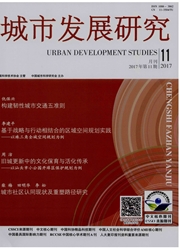

 中文摘要:
中文摘要:
随着深圳市逐步实施文化立市的发展战略,文化设施的设置和选址变得日益重要。论文利用Arcgis和SPSS软件,通过定性描述与定量分析相结合的方法来探究深圳市文化设施的分布特征,认为区际差异大,总体上呈现以特区内为核心,特区外为边缘地带的分布格局等是其主要特征,进而得出区域经济、人口分布、交通区位、政策等因素是造成现有分布格局的重要原因。
 英文摘要:
英文摘要:
With the implementation of the culture supporting strategy, the setting and location of cultural facilities in Shenzhen City has become increasingly important. In this paper, by using the method combining qualitative description and quantitative analysis which is supported by Arcgis and SPSS technique software, it is explored that great differences in six districts, and their spatial distribution reveals to be a core-peripheral structure are the primary characteristics shown in the spatio-temporal distribution patterns of cultural facilities in Shenzhen. The author believes that local economy level, population distribution, transportation location and policy are four primary reasons for the existing distribution patterns of cultural facilities in Shenzhen City.
 同期刊论文项目
同期刊论文项目
 同项目期刊论文
同项目期刊论文
 期刊信息
期刊信息
